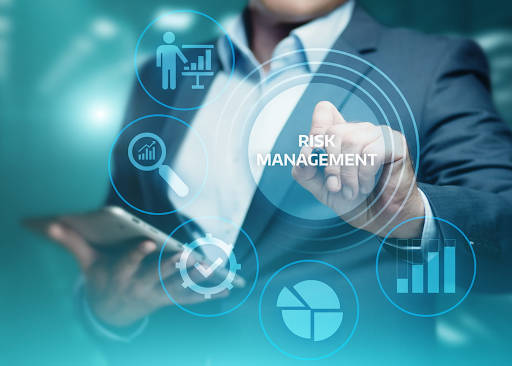
In June 2017, the Committee of Sponsoring Organizations (COSO) unveiled its latest offering, "Enterprise Risk Management – Integrating with Strategy and Performance (ERM)," marking a significant update to the earlier "Enterprise Risk Management – Integrated Framework" from 2004. Every decision an organization makes in the pursuit of its objectives involves inherent risks, and the new framework places a spotlight on the critical role of considering risk when formulating strategy to drive peak organizational performance.
Embracing a Strategic Approach
The updated framework isn't just about risk management; it emphasizes the integration of risk considerations into the fabric of strategic decision-making. Rather than treating risk as an isolated factor to be addressed separately, the new framework underscores its integral role in shaping and executing organizational strategies. By acknowledging the inherent risks associated with every decision, entities can enhance their ability to navigate the complexities of today's business landscape.
Key Objectives of the Updated Framework
The new ERM framework sets out to achieve several key objectives:
- Principle-Based Applicability: Designed to be a principle-based tool applicable across global markets and operations, the framework provides a flexible and adaptable approach to risk management. Its principles are intended to stand the test of diverse organizational structures and complexities.
- Transparency in Performance and Risk Reporting: The framework aims to support greater transparency in performance target setting and risk reporting. By aligning risk considerations with performance objectives, organizations can foster a more open and accountable approach to managing their risk landscape.
- Technological Alignment: Recognizing the prevalence of technology, data, and analytics in modern decision-making, the framework accommodates these factors. It provides a framework that seamlessly integrates technology into risk management processes, ensuring that organizations are equipped to deal with risks arising from the technological landscape.
- Adaptability in a Complex World: In an era characterized by unpredictability and complexity, the framework enables organizations to monitor the achievement of desired strategies. It acknowledges that strategies need to be dynamic and adaptable, considering the evolving landscape and unforeseen challenges.
Synergy with COSO's Internal Control Framework
It's crucial to note that the ERM framework does not supersede COSO's Internal Control – Integrated Framework (2013); rather, the two complement each other. While the Internal Control Framework focuses on the core definitions, components, and principles for objectives related to operations, compliance, and reporting, the ERM Framework expands this scope to encompass strategy. Together, they provide a comprehensive guide for entities to design internal control and processes that align with overarching organizational goals.
The Holistic Approach to Risk
One of the fundamental shifts brought about by the new ERM Framework is the move away from viewing risk management as a standalone or reactive exercise. Instead, it positions risk as an integral and proactive element of accelerating growth and enhancing performance on an ongoing basis. By weaving risk considerations into the fabric of strategic planning and execution, organizations can proactively anticipate and respond to risks, both positive and negative.
Anticipating "Good" and "Bad" Risks
In the context of the ERM Framework, risks are not inherently negative. Rather, they are categorized as "good" risks, presenting opportunities for growth and value creation, and "bad" risks, posing potential threats and challenges. The framework equips organizations to identify, evaluate, and respond to both categories, ensuring a holistic and balanced approach to risk management.
Leveraging "Good" Risks: Opportunities for Growth
"Good" risks, often synonymous with opportunities, represent areas where organizations can create value. These might include exploring new markets, launching innovative products, or engaging in strategic partnerships. The framework encourages organizations to view risk not merely as a hazard to be mitigated but as a catalyst for growth and value creation.
Mitigating "Bad" Risks: Crisis Preparedness
On the flip side, "bad" risks encompass potential crises or challenges that could impede organizational objectives. These might involve regulatory compliance issues, economic downturns, or other unforeseen disruptions. The framework guides entities in developing robust strategies to navigate and mitigate these risks, ensuring resilience in the face of adversity.
Strategic Adaptability in a Changing Landscape
High-performing organizations understand the imperative of establishing and periodically adjusting their strategies to align with changing circumstances. The landscape of business is ever-evolving, and entities must remain keenly aware of emerging opportunities and challenges. The ERM Framework serves as a dynamic tool, enabling organizations to proactively adapt their strategies, anticipate risks, and respond with agility to ensure continued success.
The Role of COSO's ERM Framework in Value Creation
COSO's revamped ERM Framework emerges as a formidable tool for organizations aiming to better identify, evaluate, and respond to enterprise-wide risk. Its principles, rooted in strategic integration, technological alignment, and transparent reporting, empower organizations to navigate the complexities of the modern business environment.
By embracing a holistic approach to risk—one that considers both the positive and negative aspects—entities can position themselves as dynamic and adaptive leaders in their respective industries. The framework serves as a guide for fostering a risk-aware culture, where risk management becomes an intrinsic part of organizational DNA rather than a periodic exercise.
COSO's ERM Framework provides a comprehensive and forward-looking approach to risk management. As organizations grapple with an increasingly complex and unpredictable
